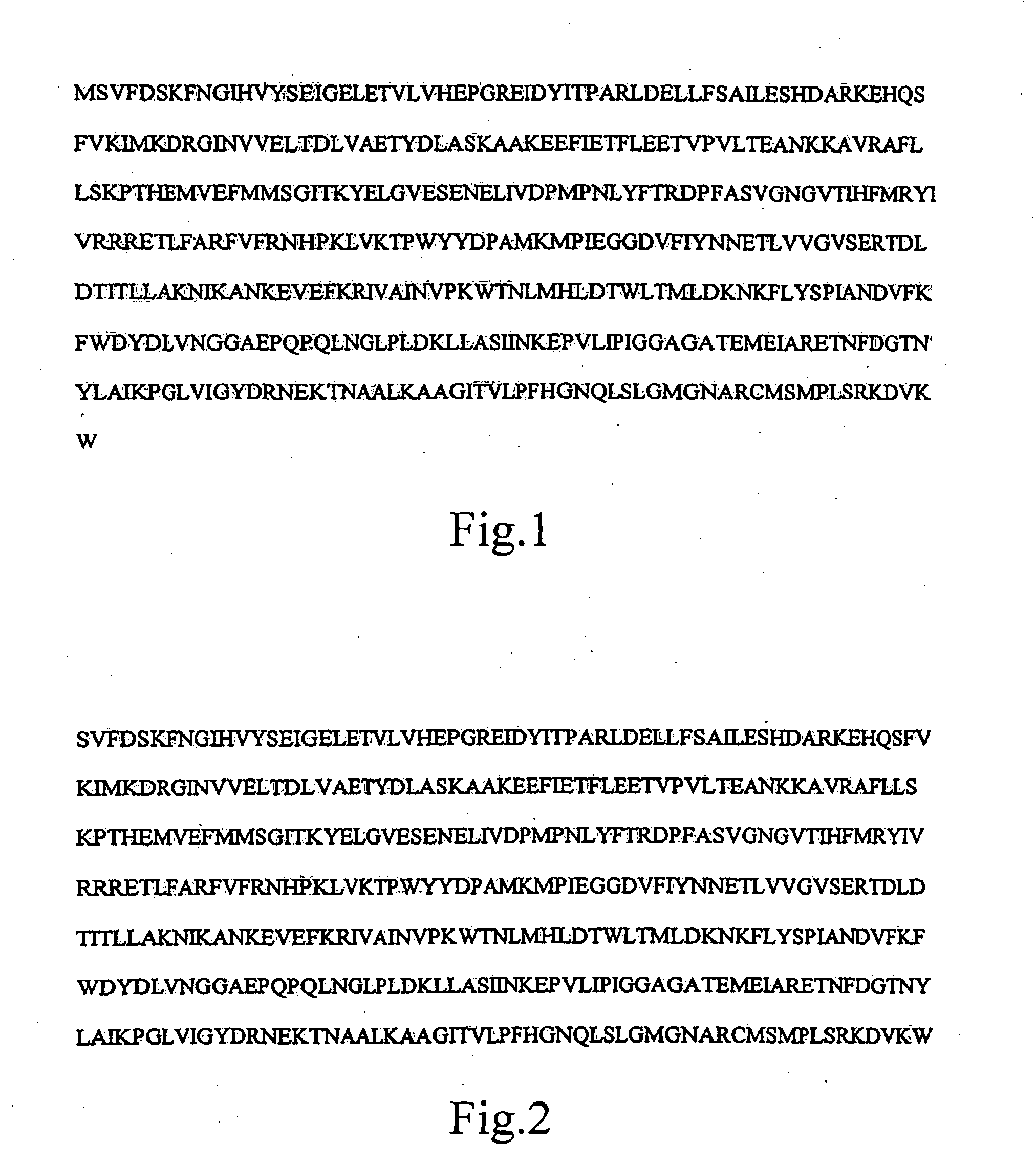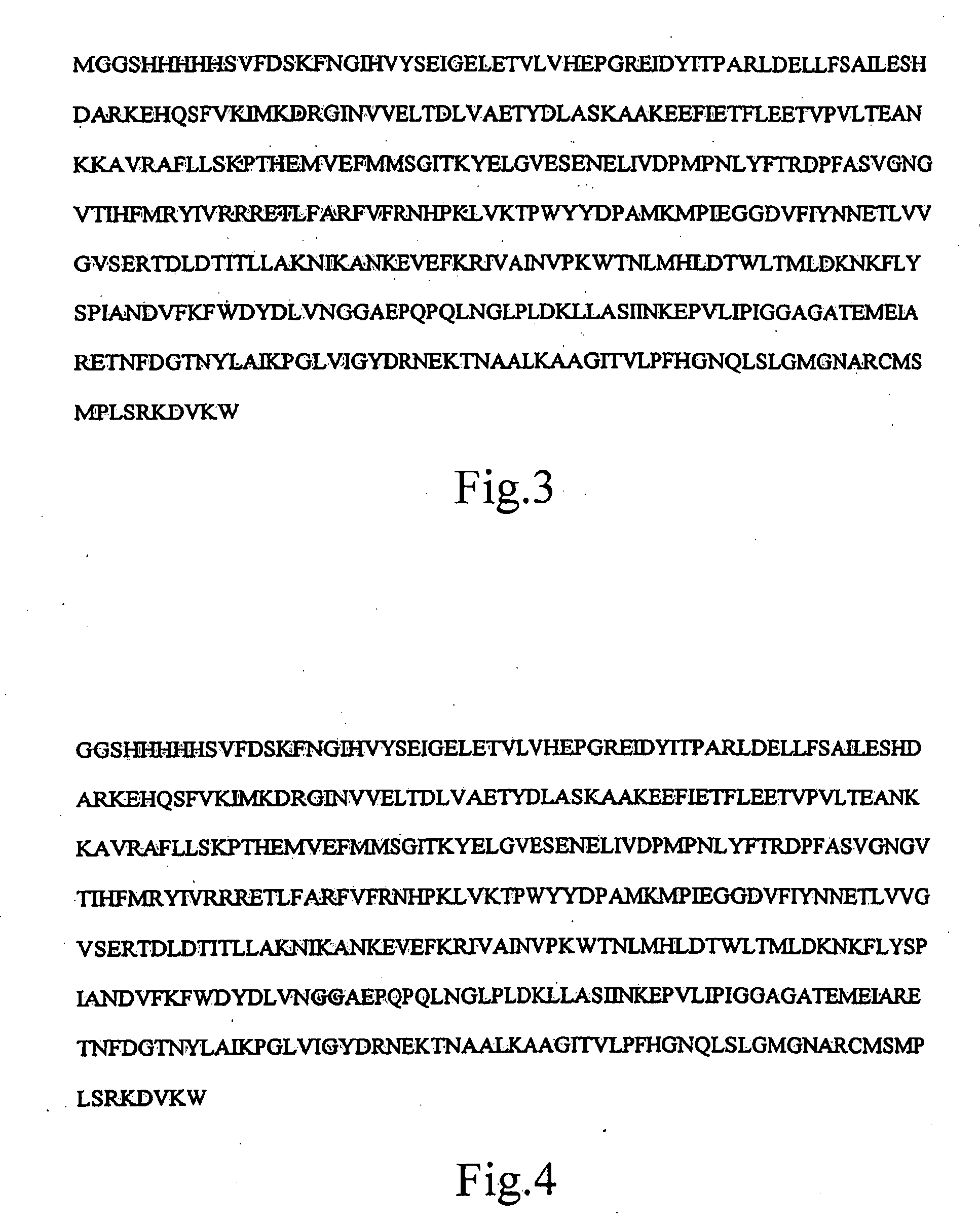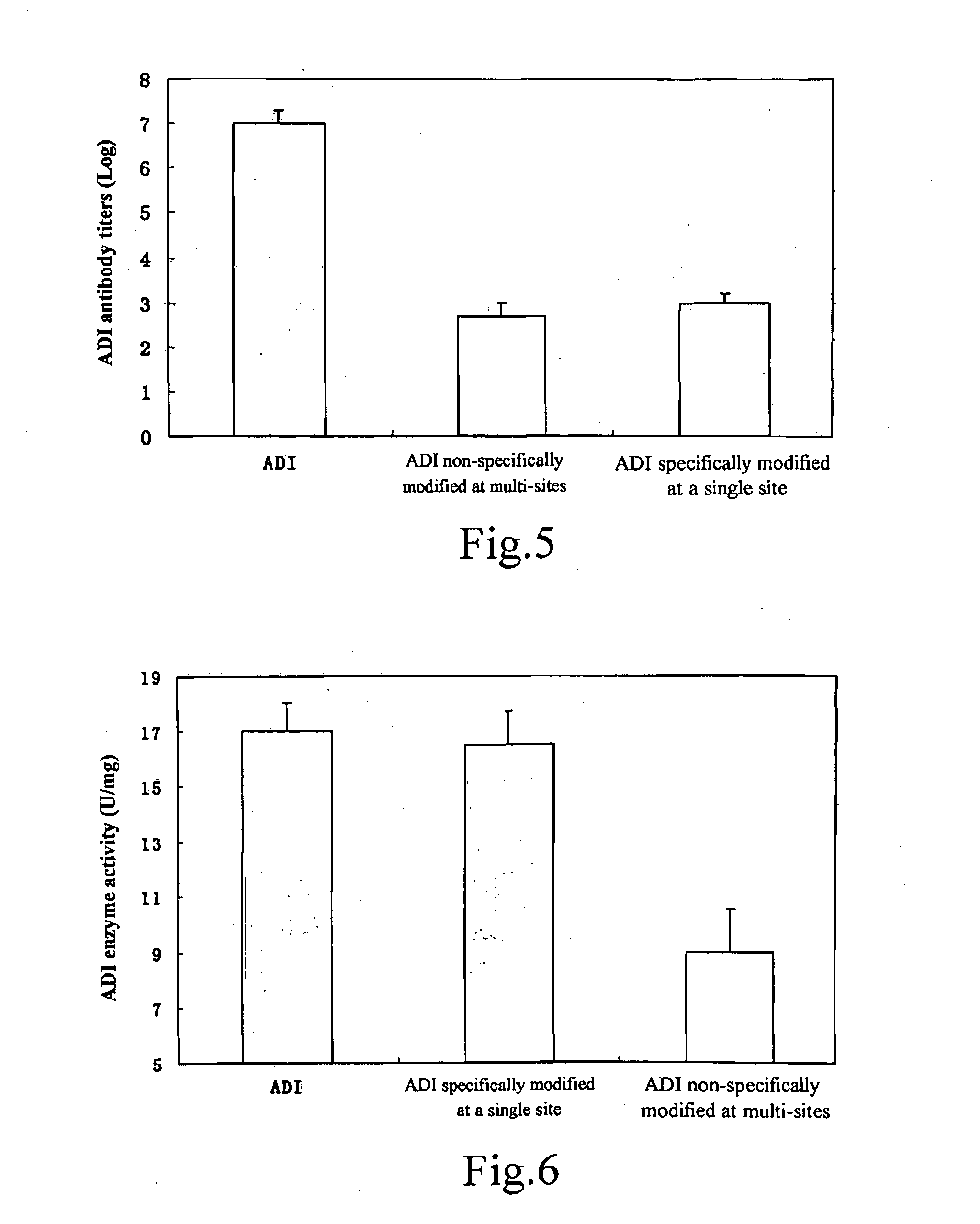Novel compound for treatment of tumor
a tumor and compound technology, applied in the field of tumor compound, can solve the problems of difficult cure, short life span of patients with hepatoma, and insatiable therapeutic effect, and achieve the effect of prolonging the in vivo half-life of arginine deiminas
- Summary
- Abstract
- Description
- Claims
- Application Information
AI Technical Summary
Benefits of technology
Problems solved by technology
Method used
Image
Examples
example 1
Coupling of PEG to the N-Terminus of Arginine Deiminase
[0081]The recombinant arginine deiminase (Protgen Ltd.) was dialyzed into 10 mM phosphate buffered saline, pH 7.0. Protein concentration was determined by measuring absorbance at 280 nm using UV spectrophotometer (Agilent Technologies), and then was adjusted to 4 mg / ml. When coupling with 20 kDa or 40 kDa PEG, 40 mg of 20 kD PEG (mPEG-ButyrALD 20 kDa, Nektar) solid or 80 mg of 40 kD PEG (mPEG-ButyrALD 40 kDa, Nektar) solid was added to 10 ml protein solution (containing 40 mg protein), and the mixture was stirred at room temperature until PEG solid dissolved completely and the molar ratio of PEG and arginine deiminase was 2:1. CH3BNNa (Sigma) was added as reductant to achieve a final concentration of 20 mM, and the pH value of the solution was adjusted to 7. After resting at room temperature for 10 hours, most of the arginine deiminase was modified with mono-PEGylation, and a small amount of arginine deiminase was modified at mu...
example 2
Purification of Arginine Deiminase Modified with PEG at a Single Site of N-Terminus Through Anion-Exchange Column
[0082]Arginine deiminase modified with 20 kDa or 40 kDa PEG was purified through anion-exchange column chromatography (Bio-Rad Ltd.). The pH value of the mixed solution after reaction was adjusted to 7. Sample was loaded onto column pre-equilibrated in a equilibrium buffer containing 10 mM-Tris, pH 7.0. After loading the sample, the chromatography column was eluted with 3 column volume of equilibrium buffer, and then gradient elution was performed with buffer containing 10 mM Tris, 0-1 M NaCl, pH 7.0. The PEG which did not involve in reaction did not attach to the column but the peak thereof appeared during penetration and washing due to its minimal charge. The elution peaks appeared in the following order: multi-site modified arginine deiminase, mono-site specifically modified arginine deiminase, and unmodified arginine deiminase. Different fractions can be collected acc...
example 3
The Significant Increase of the Half-Life in Blood of Arginine Deiminase Modified with PEG at a Single Site of N-Terminus
[0083]The half-life of arginine deiminase and PEG modified arginine in mice was measured respectively to evaluate the prolonged efficacy of the modification with PEG. 6 healthy Kunming mice (the average body weight is about 25 g) (Vitalriver Experimental Animal Center) were divided into 2 groups and injected with arginine deiminase and 20 kD PEG modified arginine deiminase via tail vein, in a dose of 15 mg / kg body weight. And then, blood samples were collected from tail vein at 2, 10, 30 minutes, 1, 2, 4, 8, 16, 24, 48, 72, 96, 120, 144 and 168 hours. Plasma was stored at minus 80° C. After blood was taken, the concentration of arginine deiminase and PEG modified arginine deiminase was measured through sandwich ELISA, respectively. In vivo pharmacokinetic result shows that in vivo half-life of arginine deiminase increases from an average of 4 hours to 72 hours aft...
PUM
| Property | Measurement | Unit |
|---|---|---|
| Mass | aaaaa | aaaaa |
| Mass | aaaaa | aaaaa |
| Mass | aaaaa | aaaaa |
Abstract
Description
Claims
Application Information
 Login to View More
Login to View More - R&D
- Intellectual Property
- Life Sciences
- Materials
- Tech Scout
- Unparalleled Data Quality
- Higher Quality Content
- 60% Fewer Hallucinations
Browse by: Latest US Patents, China's latest patents, Technical Efficacy Thesaurus, Application Domain, Technology Topic, Popular Technical Reports.
© 2025 PatSnap. All rights reserved.Legal|Privacy policy|Modern Slavery Act Transparency Statement|Sitemap|About US| Contact US: help@patsnap.com



